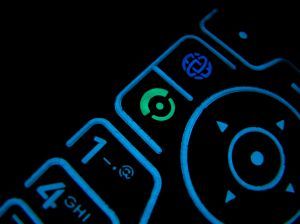There’s a lot of talk about the new SkyFire internet browser for mobile devices. But without a degree in Information Systems, it may be hard to understand what the hype is all about. That’s unfortunate, because SkyFire’s technology is a breakthrough that truly appeals to the general masses of mobile device owners–businesspeople and students who may not have a technology background.
So what is the hype about? Why, exactly, is SkyFire better than what’s currently available to mobile internet users?
The answer is SkyFire’s use of server-side browsing technology. It’s a radically different approach to internet browsing on Windows-based cell phones and other mobile devices. In short, SkyFire’s server-side technology means that a powerful computer (a server) is doing the bulk of the processing work–not the cell phone, Blackberry, Palm device, etc.
This approach promises to make web surfing faster and less frustrating for mobile users who run SkyFire. Some firsthand sources have even described it as “PC-like” internet browsing.
Traditionally, internet browsing on a mobile phone has been slow. This is because phones and other mobile devices have been connecting (or attempting to connect) to the internet in a manner similar to that of a home computer. But most mobile phones have limited computing resources, and many are designed with internet capabilities as an afterthought–not a primary feature.
The SkyFire sever-side browser approaches mobile internet use in a very different way. Wtith the SkyFire browser, the mobile device uses its limited resources to communicate with a dedicated server (instead of attempting to communicate with the internet.) This server is much more powerful and faster than a mobile phone, and it will handle the majority of the internet browsing and processing work. And that mobile phone, in turn, is much faster when it’s communicating with one dedicated server machine (instead of trying to communicate with the myriad web servers that comprise what we call the internet.)
SkyFire technology is almost guaranteed to catch on with the mobile phone- and internet-using masses. SkyFire means that mobile devices will finally be able to run higher-end web technologies like Flash; cell phones will finally be able to play streaming videos. Basically, SkyFire users will finally be able to use their mobile devices to connect to the “real” internet instead of the frustrating “mobile” internet.
Most cell phone providers that currently offer streaming videos don’t mention in their advertising campaigns that these videos can usually only be accessed through a proprietary system (basically, the phone company decides what videos their users can access.) Even then, the videos are often slow and impractical to access. The advent of SkyFire server-side mobile technology means that users should be able to access popular video sites like YouTube and MySpace Videos instead.
One potential drawback of SkyFire: it’s unlikely to appeal to users concerned with privacy and security issues. The use of server-side processing adds one more “link” in the chain of communication–some see that one more chance for their sensitive data to be compromised or stolen. The server-side technology also means that all of a SkyFire user’s internet usage information is going out to that one single server, possibly being monitored or recorded. That’s a scary concept to some. Still, most users concerned with online security know better than to access or send sensitive information on mobile and wireless devices in the first place.
Interested parties can try to get in on beta testing at SkyFire’s website (http://skyfire.com/sign-up/form.)




